Wuhan lockdown: A year of China's fight against the Covid pandemic
- Published
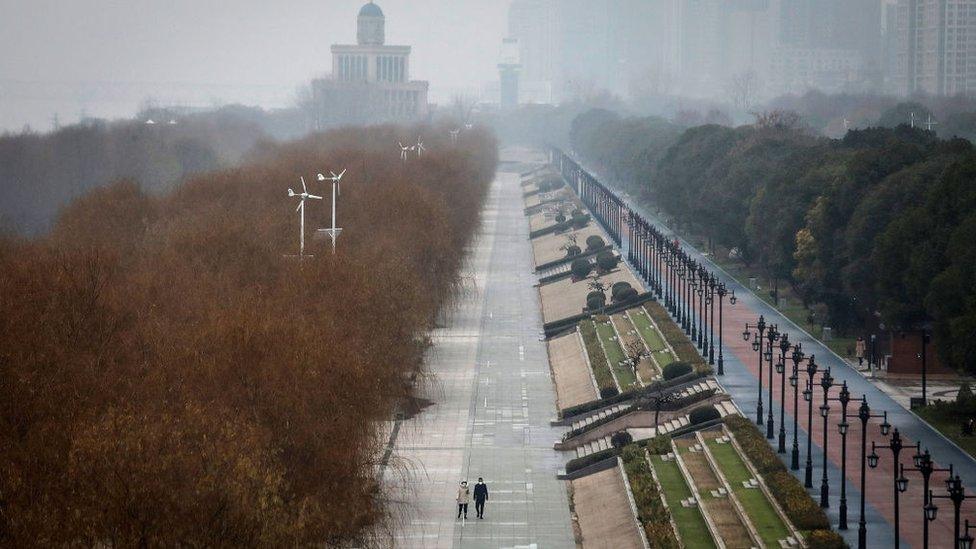
Wuhan endured one of the strictest lockdowns the world has seen in the pandemic
A year ago on 23 January 2020 the world saw its first coronavirus lockdown come into force in Wuhan, the Chinese city where the pandemic is believed to have started.
At the time, the wider world was shocked by the harsh restrictions and rigid enforcement. From late January until June, the city was effectively sealed off from the rest of the country.
But even though it came at a significant cost, it proved to be a highly successful method of tackling the virus.
One year on, China is often held up as one of the virus success stories - not least by Beijing itself. So how exactly did China get from lockdown to here - and how has Beijing controlled its own story?
How did China tackle the outbreak?
Authorities were slow to react to initial reports of a mystery illness circulating at a wet market in Wuhan in late 2019, allowing millions of the city's residents to move around the country in the days leading up to Chinese New Year, a traditional high-travel period, in January 2020.
Earlier this week, an interim report by an independent panel appointed by the World Health Organization (WHO) criticised China's initial response, saying that "public health measures could have been applied more forcefully".
But once China finally recognised there was a problem, authorities cracked down hard.
On January 23, two days before the country celebrated Chinese New Year, the streets of Wuhan fell silent: some 11 million people were put under tight quarantine, and face masks and social distancing became mandatory.
Back inside the Wuhan market where Covid-19 was first traced
With medical capacities overwhelmed, authorities surprised the world as they managed to set up entire field hospitals within days.
But even so, residents like Wenjun Wang were scared. She told the BBC at the time how her uncle had already died, and her parents were sick - but getting help was still all but impossible.
The methods used in Wuhan would become routinely employed in the following months as China tackled outbreaks in other major cities such as Beijing and Shanghai with immediate lockdowns and swift mass testing.
Entry into China, meanwhile, was managed by tight entry and quarantine control.
But even in those early days, authorities also sought to tightly control the spread of information - an issue which would crop up again and again over the next year, and an issue our colleagues examined in December.
Doctors who tried to warn each other about the virus were reprimanded and ordered to keep silent. The most famous of these, Dr Li Wenliang, died himself later from the virus.
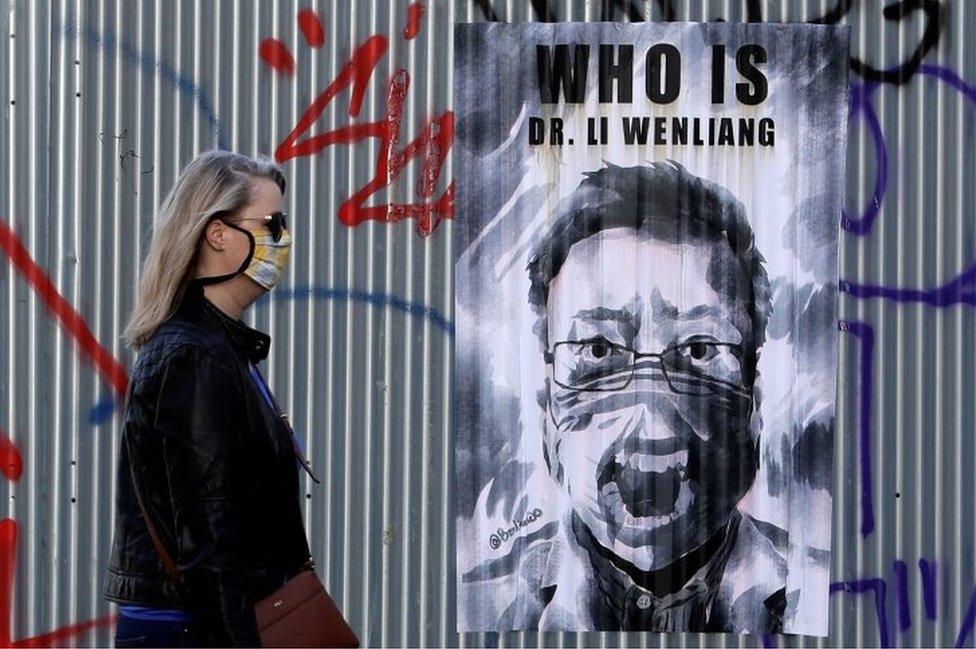
Dr Li's death made news around the world - here a woman passes a poster of him in Prague
News outlets, which initially were allowed some room to report from Wuhan, faced a clampdown while citizen journalists who tried to report from the city were silenced. Recently, one of them received a four-year prison sentence.
Did the measures work?
While China's rigorous lockdowns may have initially struck observers as harsh and restrictive, the official data one year on appears to justify the measures, with a comparatively low death toll and caseload.
China has had just under 100,000 recorded infections, with only around 4,800 deaths linked to Covid-19.
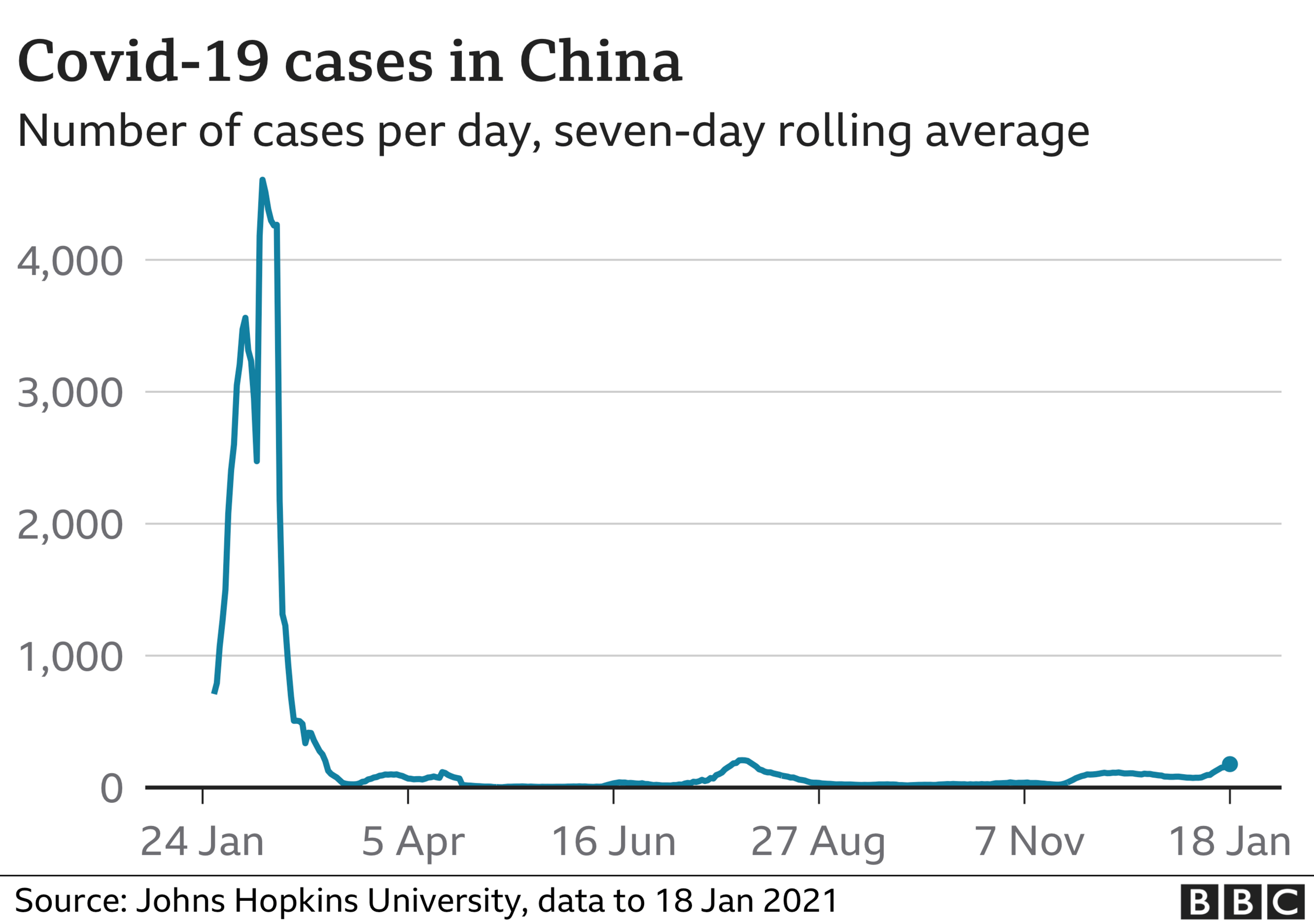
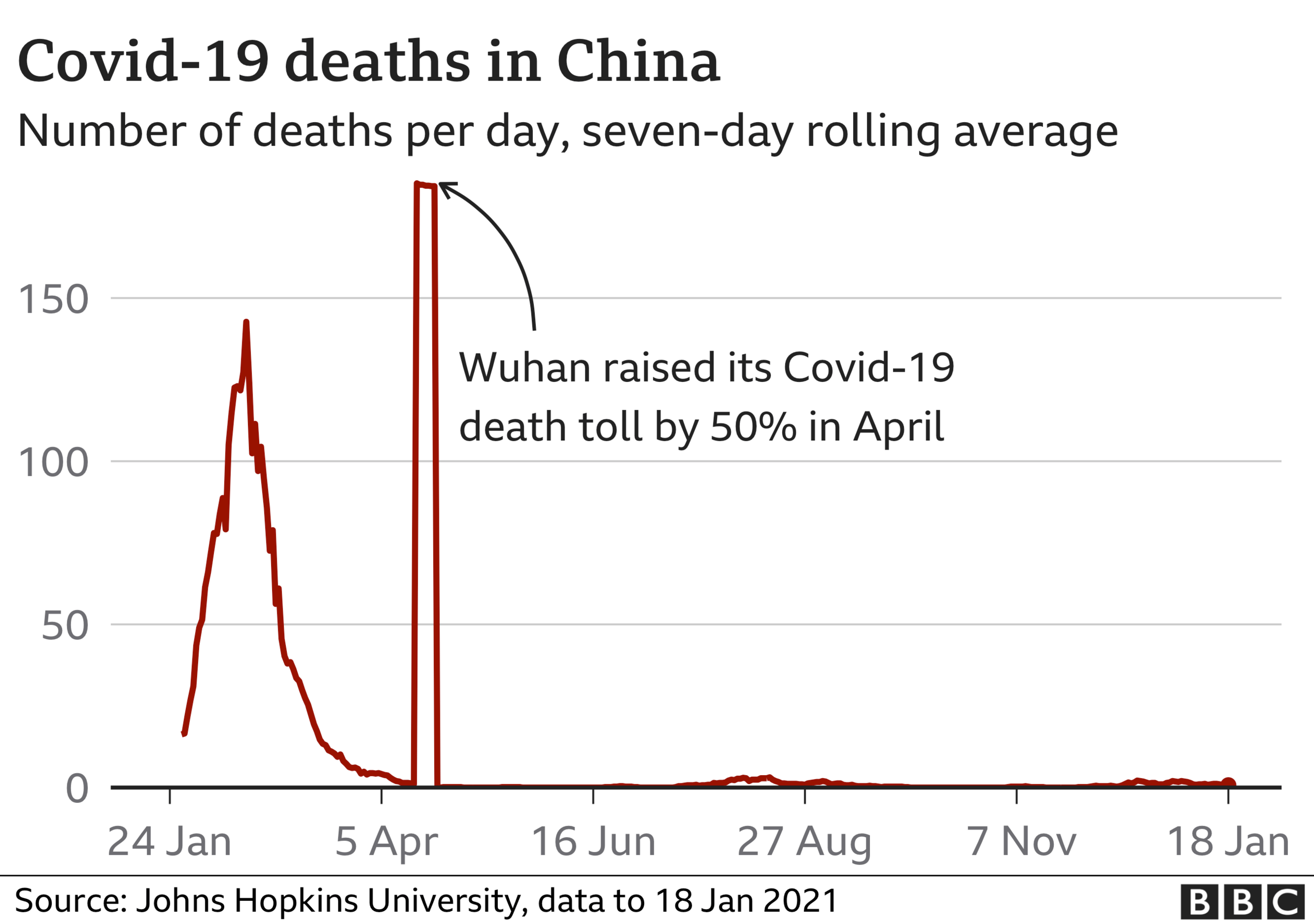
In April 2020, Wuhan changed the way it reported Covid deaths, resulting in a spike
Unlike many other countries, after the initial outbreak, the numbers appear to flatline with no second wave in sight.
Chinese data however does not include asymptomatic cases in this particular tally and some observers have raised doubts over its reliability.
How is life in Wuhan now?
One year on, life appears to be almost back to normal in the city. Last week the BBC drove to the city and spoke to people about what their lives are like now.
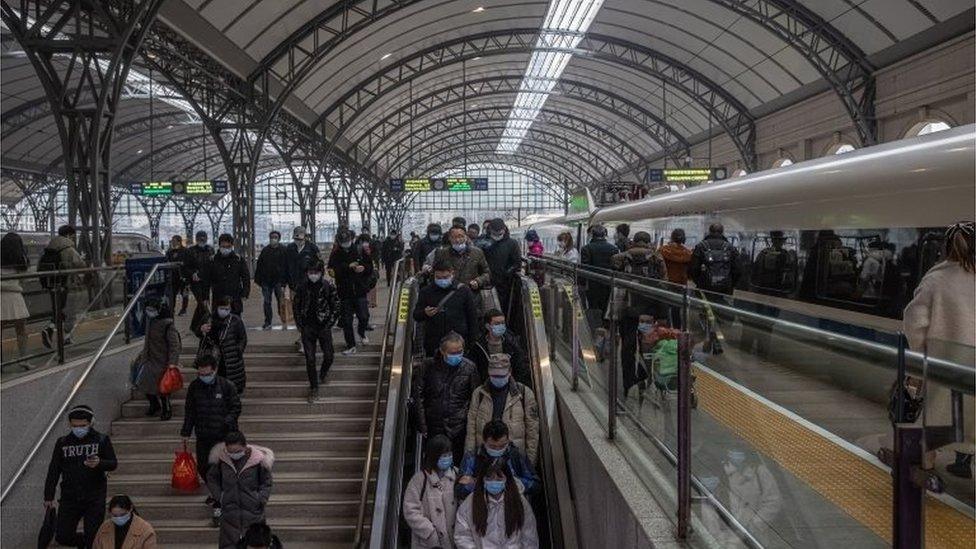
Wuhan's trains are busy again, amid fears new cases could surge at New Year
However, censorship has made it difficult to get a full sense of how Wuhan, and other parts of the country, coped with the strict measures.
What is certain is that this past year has taken a psychological toll, according to recent interviews with Wuhan residents, some of whom were worried about talking to international media.
"The pandemic has certainly left something behind, even if it is not visible on the surface," one resident, Han Meimei, told the BBC.
"But there is certainly trauma deep inside many people in this city, including many details of the past year that I don't think I wanted to look at clearly until now."
Still, there is a feeling among some Chinese - helped by state propaganda - that China has handled the pandemic better than most, as some Beijing residents told the BBC recently.
And for others, there is now a greater sense of unity and connection.
A Wuhan student, who only wanted to be known as Li Xi, said: "Before the pandemic, everyone seemed a bit grumpy, often rushed... but after the pandemic, they have become more grateful for life and much more warm-hearted."
"This kind of disaster has actually brought more people together," said Han. "If people are there, the city is still there."
What is the situation like in the rest of China?
Authorities remain on alert for any new outbreaks - recent ones in Qingdao and Kashgar resulted in swift quarantines and mass testing.
While case numbers have remained very low, in recent weeks an uptick in cases has worried authorities. Earlier this month, China saw its largest increase in daily case numbers in five months.
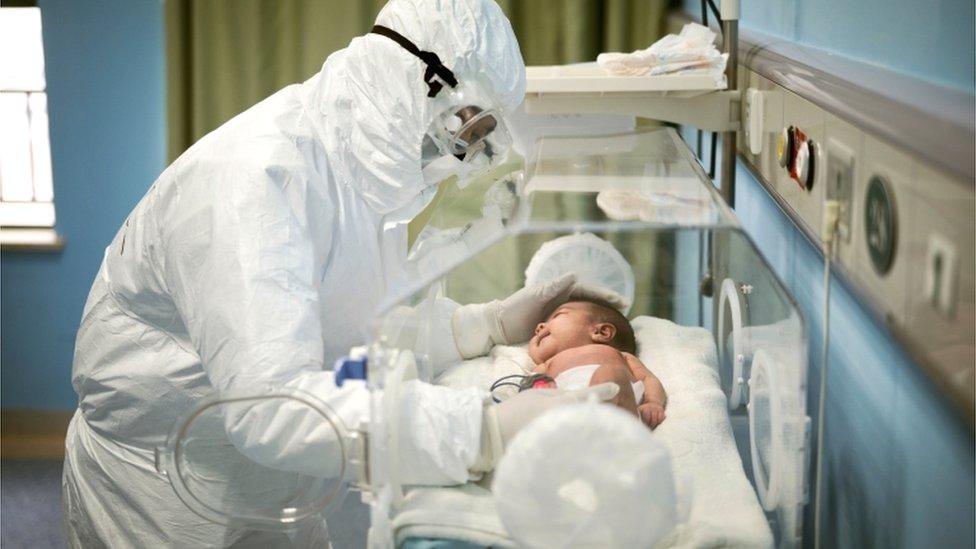
China's hard lockdowns helped to keep both infections and fatalities low
Officials are now focused on the north east, with an estimated 19 million people currently under lockdown in the region including the city of Shijiazhuang as well as parts of Hebei, Jilin and Heilongjiang provinces.
The pandemic and the periodic lockdowns have had a significant impact on the economy, Millions of jobs have been lost and China saw its slowest growth in more than four decades, although it began recovering quickly and was the only major world economy to grow in 2020..
But in theory, life is almost back to normal in vast swathes of China, and - a year on - the focus is once again on Chinese New Year, and the fact millions of people are preparing to travel home.
There are, of course, fears that chunyun, the mass travel period around Chinese New Year, will become a superspreader event when it officially begins late next week.
As a result, all eyes are currently on the vaccination programme.

China's Sinovac vaccine is beginning to roll out internationally
Chinese companies Sinovac and Sinopharm received domestic emergency approvals for their vaccines in mid-2020 and began administering them to employees, frontline workers and paying members of the public even before clinical trials were completed. In October a BBC team filmed hundreds rushing to get vaccinated.
Reports of their efficiency vary widely. Chinese officials have said they are aiming to inoculate 50 million people before chunyun.
Beijing is also seeking to steer the narrative about the origin and cause of the global pandemic.
There have been accusations that authorities sought to cover up the severity of outbreak during its early days.
China, however, started saying that although Wuhan was where the first cluster was detected, it may not necessarily be the location where the virus originated from.
State media has recently suggested the pandemic might have begun outside of China - Spain, Italy or even the US - and have also carried claims that the virus has been entering the country through frozen food imports, though experts have cast doubt on this.
Last year, the BBC went to Wuhan to trace how the first cluster emerged and talk to those who lost loved ones in the initial outbreak.
This month, a team sent by the World Health Organization finally arrived in Wuhan to find out how the virus originated, amid concerns over what kind of data and access will be given by the Chinese authorities.
Observers are also worried that with international investigations taking place only one year after the initial outbreak in Wuhan, answers may still prove to be elusive.
Reporting by Andreas Illmer, Yitsing Wang and Tessa Wong.

TESTING: How do I get a virus test?
LOOK-UP TOOL: How many cases in your area?
YOUR QUESTIONS: We answer your queries
THE R NUMBER: What it means and why it matters
TEST AND TRACE: How does it work?

Related topics
- Published14 January 2021
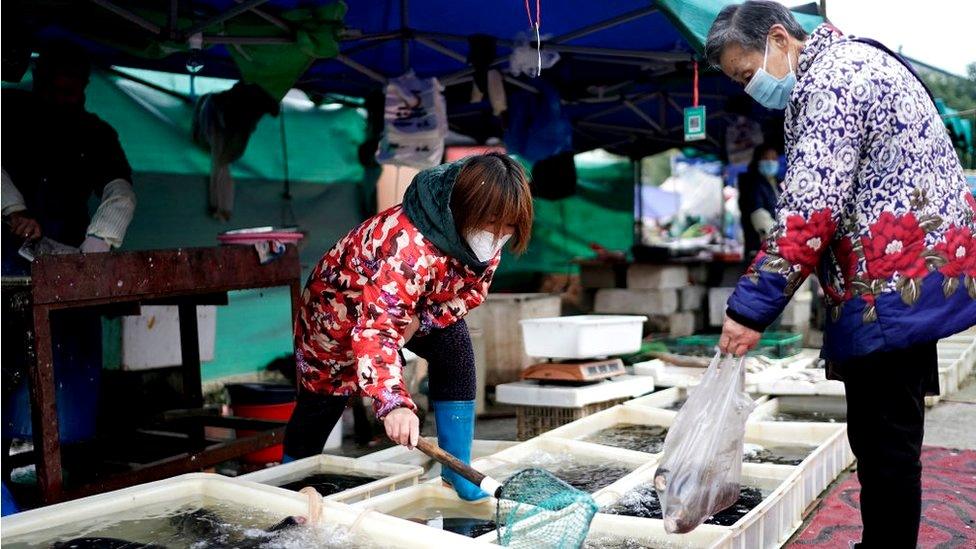
- Published14 January 2021

- Published18 August 2020

- Published30 January 2020
